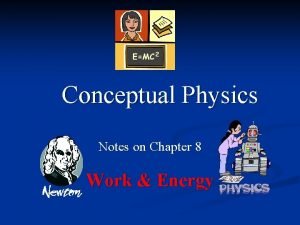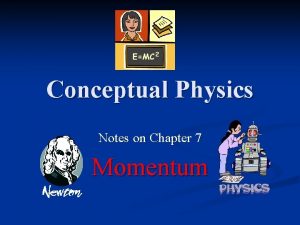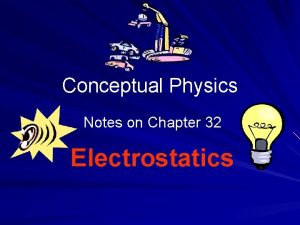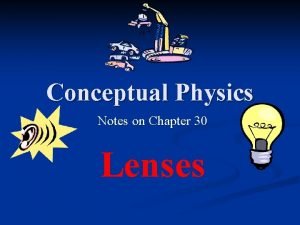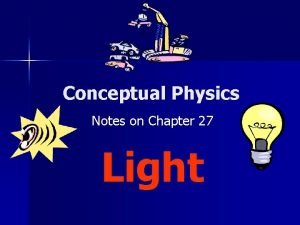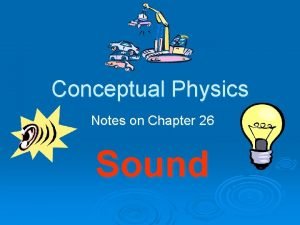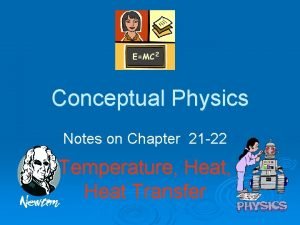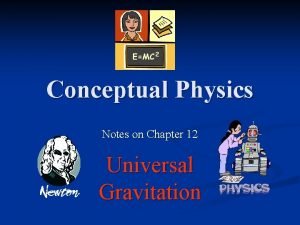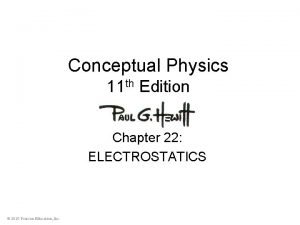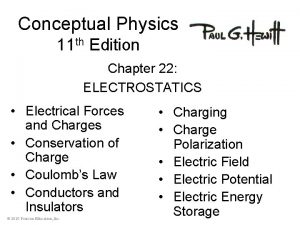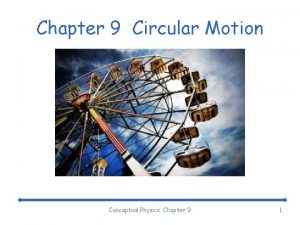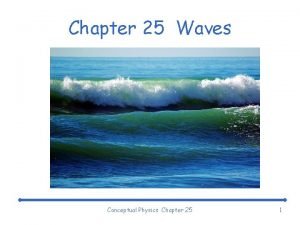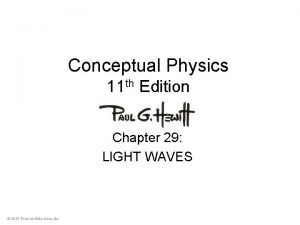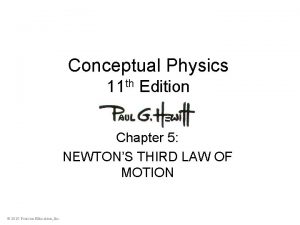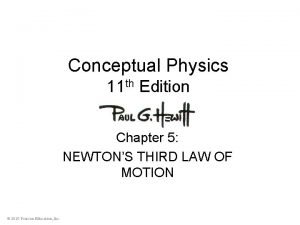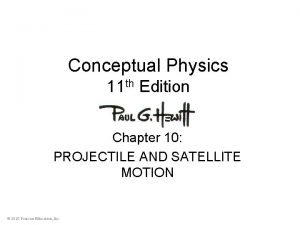Conceptual Physics 11 th Edition Chapter 26 PROPERTIES















- Slides: 15

Conceptual Physics 11 th Edition Chapter 26: PROPERTIES OF LIGHT • • • Electromagnetic Waves The Electromagnetic Spectrum Transparent Materials Opaque Materials Seeing Light—The Eye © 2010 Pearson Education, Inc.

Electromagnetic Waves Any time you shake an electrically charged object back and forth, you produce an electromagnetic wave. © 2010 Pearson Education, Inc.

Electromagnetic Waves The electric and magnetic fields of an electromagnetic wave are perpendicular to each other and to the direction of motion of the wave. © 2010 Pearson Education, Inc.

Electromagnetic Spectrum • In a vacuum, all electromagnetic waves move at the same speed • We classify electromagnetic waves according to their frequency (or wavelength) • Light is one kind of electromagnetic wave © 2010 Pearson Education, Inc.

Electromagnetic Spectrum • The lowest frequency (and longest wavelength) light our eyes can see appears red • As the frequency increases, the light goes through the colors: orange, yellow, green, blue, violet • Violet light has nearly twice the frequency of red light, and half the wavelength © 2010 Pearson Education, Inc.

Transparent Materials Glass blocks both infrared and ultraviolet, but it is transparent to visible light. © 2010 Pearson Education, Inc.

Transparent Materials Averaged over many molecules, light travels more slowly through a transparent material than through a vacuum. © 2010 Pearson Education, Inc.

Transparent Materials Average speed of light through different materials • Vacuum: c = 300, 000 m/s • Atmosphere: slightly less than c (but rounded off to c) • Water: 0. 75 c • Glass: 0. 67 c, depending on material • Diamond: 0. 41 c © 2010 Pearson Education, Inc.

Opaque Materials • Most things around us are opaque—they absorb light without re-emitting it. • Vibrations given by light to their atoms and molecules are turned into random kinetic energy—into internal energy. • These materials become slightly warmer. © 2010 Pearson Education, Inc.

Opaque Materials Metals • Light shining on metal forces free electrons in the metal into vibrations that emit their own light as reflection. © 2010 Pearson Education, Inc.

Rays and Shadows • A very distant or small light source will produce a sharp shadow. • A larger or more nearby light source produces a blurry shadow. © 2010 Pearson Education, Inc.

Shadows The dark part inside a shadow where the light is totally blocked is called an umbra. The penumbra is a lighter part around the edges of a shadow, where light from a broad source is only partially blocked. © 2010 Pearson Education, Inc.

© 2010 Pearson Education, Inc.

Seeing Light – The Eye © 2010 Pearson Education, Inc.

Seeing Light – The Eye The retina is composed of tiny antennae that resonate to the incoming light. • Rods handle vision in low light. – They predominate toward the periphery of the retina. • Cones handle color vision and detail. – They are denser toward the fovea. – There are three types of cones, stimulated by low, intermediate and high frequencies of light. © 2010 Pearson Education, Inc.
 University physics with modern physics fifteenth edition
University physics with modern physics fifteenth edition Chapter 8 conceptual physics
Chapter 8 conceptual physics Conceptual physics chapter 7 momentum answers
Conceptual physics chapter 7 momentum answers Conceptual physics chapter 35 electric circuits
Conceptual physics chapter 35 electric circuits Chapter 33 electric fields and potential
Chapter 33 electric fields and potential Conceptual physics electrostatics
Conceptual physics electrostatics Conceptual physics chapter 30 lenses pdf
Conceptual physics chapter 30 lenses pdf Conceptual physics chapter 27 light pdf
Conceptual physics chapter 27 light pdf Conceptual physics chapter 26
Conceptual physics chapter 26 Conceptual physics chapter 21
Conceptual physics chapter 21 Conceptual physics chapter 13 universal gravitation
Conceptual physics chapter 13 universal gravitation Conceptual physics chapter 6 momentum
Conceptual physics chapter 6 momentum Conceptual physics chapter 22
Conceptual physics chapter 22 Conceptual physics chapter 22 electrostatics
Conceptual physics chapter 22 electrostatics Conceptual physics chapter 9 circular motion answers
Conceptual physics chapter 9 circular motion answers Bow wave aircraft
Bow wave aircraft

